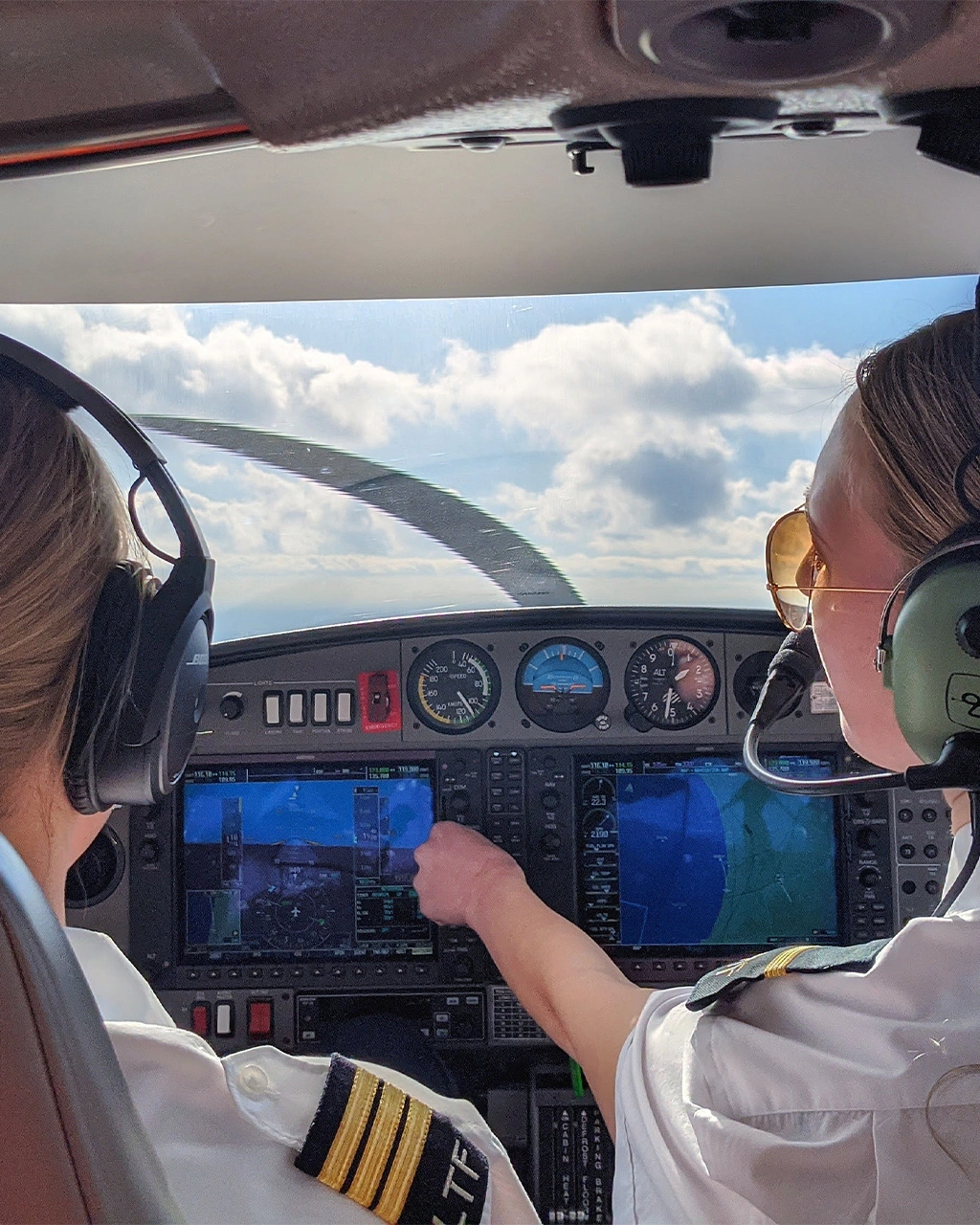
September 18, 2024
Ratings and endorsements commercial pilots can secure
There is often strong competition among commercial pilots in the aviation industry and many will pursue additional ratings and endorsements to stand out and enhance their career prospects.
These specialised certifications expand their skill set, enabling them to operate different types of aircraft, manage complex flight operations, and take on more diverse flying roles.
In aviation, a rating is an authorisation that allows a pilot to operate a specific type of aircraft or to conduct certain types of operations. An endorsement is a notation added to a pilot’s license, often indicating proficiency in a specific skill or capability.
Both ratings and endorsements are crucial for pilots looking to advance their careers, as they signify a higher level of expertise and broaden the scope of their flying opportunities.
Let’s look at a few of the ratings and endorsements pilots can pursue during their careers.
Instrument Rating (IR)
The Instrument Rating (IR) is one of the most sought-after ratings for pilots. It authorises pilots to fly in conditions where visual references are limited or unavailable, such as in clouds, fog, or heavy rain. With an IR, pilots can rely on their instruments for navigation and flight control, significantly enhancing their ability to operate safely in adverse weather conditions.
Many commercial operations, including airline and charter flights, require pilots to have an IR. It is often a prerequisite for more advanced ratings and is essential for career progression.
An IR equips pilots with the skills to handle challenging weather conditions, reducing the likelihood of accidents due to poor visibility.
Pilots with an IR can fly under Instrument Flight Rules (IFR), which allows for more direct routing and reduces delays caused by weather.
Pilots typically undergo specialised training that includes both ground school and flight training. The training focuses on understanding and using flight instruments, IFR navigation, and flying solely by reference to instruments.
Multi-Engine Rating (MER)
A Multi-Engine Rating (MER) allows pilots to operate aircraft with more than one engine. This rating is crucial for pilots aiming to work with airlines, charter companies, or any operation that involves multi-engine aircraft.
Most commercial aviation jobs, especially those involving larger aircraft, require a multi-engine rating. Multi-engine aircraft generally offer better performance, such as higher speed, altitude capabilities, and reliability, particularly over long distances or in challenging environments. Almost all airline pilots operate multi-engine aircraft, making this rating a critical step towards an airline career.
Training for an MER involves theoretical knowledge and practical flying experience in a multi-engine aircraft. Pilots learn about the aerodynamics of multi-engine planes, engine-out procedures, and how to manage asymmetric thrust. The training culminates in a practical test where pilots demonstrate their ability to handle multi-engine aircraft under various conditions.
Type Ratings
A Type Rating is a certification to operate a specific aircraft type, typically required for larger or more complex aeroplanes, such as jets and certain turboprops. Each type rating is specific to the make and model of the aircraft, such as the Boeing 737 or Airbus A320.
Type ratings are mandatory for pilots who wish to fly specific types of commercial aircraft. Airlines often provide type rating training as part of their employment packages. Pilots with type ratings are highly specialised, often leading to better job security and higher salaries. Gaining a type rating involves in-depth training on the aircraft’s systems, performance, and handling characteristics, making the pilot an expert in that specific model.
The process involves extensive ground training, including systems knowledge and simulator sessions, followed by in-flight training in the specific aircraft. Pilots must pass a comprehensive check ride to obtain the type rating.
Flight Instructor Rating
The Flight Instructor rating allows commercial pilots to teach and train student pilots. It is a common pathway for pilots looking to build flight hours and experience while earning an income.
Instructing is one of the fastest ways for new commercial pilots to accumulate the flight hours needed for more advanced positions. Teaching others deepens a pilot’s understanding of flight dynamics, regulations, and best practices, making them more well-rounded aviators. They can work at flight schools, offer private lessons, or even operate their own flying school.
Pilots must first complete additional training focused on teaching methods, lesson planning, and how to effectively communicate complex concepts. They must also demonstrate their teaching ability during a practical exam with an examiner.
Seaplane Rating
A Seaplane Rating allows pilots to operate aircraft equipped for water landings and take-offs. While not as commonly required as other ratings, it opens up unique flying opportunities in regions with significant water bodies.
Pilots with a seaplane rating can work in specialised sectors such as tourism, firefighting, and remote area supply. Flying seaplanes require advanced piloting skills due to the challenges of water operations, making it a valuable addition to a pilot’s credentials.
Training typically involves a few hours of flight time in a seaplane, focusing on water take-offs, landings, and taxiing. Pilots must pass a practical test to earn the rating.
Securing additional ratings and endorsements is an essential part of a commercial pilot’s career progression. Each certification expands a pilot’s skill set, opening up new job opportunities and potential career paths. Whether through aviation training in Taiwan or other advanced training programs, pursuing these qualifications requires dedication, continuous learning, and a commitment to safety and excellence. As commercial pilots advance their careers by getting a commercial pilot license and beyond, these additional ratings and endorsements are pivotal in achieving long-term success in the aviation industry.








